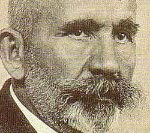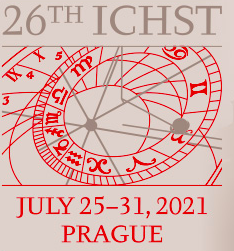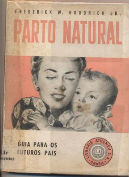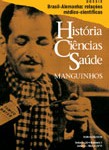February 2020
Vivian Mannheimer | HCS-Manguinhos blog
Is race a biological category or a social construction? Which are the most common approaches to race in the history of science, specially in the United States? These and other issues were addressed by Evelynn Hammonds, Chair of the Department of History of Science at Harvard University, in a lecture held in the University of California, San Diego, last January.
Race is a difficult concept to define. The scientific nature of race has already been used to justify historical events such as Colonialism and Nazism. Recent historiography on race in science tends to approach it as a “false idea”. On the other hand, common sense continues to understand race from biological characteristics, such as skin color.

Evelynn Hammonds is also a Professor of History of the Science and of African and African American Studies at the Department of History of Science, Harvard University. Photo: Vivian Mannheimer
“Just saying that race is a social construction does not help if biologists study it in ways that are not social constructions and people still see it as meaningful biological distinctions,” said Hammonds.
She presented the discontinuities in the way race has been framed in the history of science.
The first was the invention of race by European naturalists and anthropologists, marked by Carl Linnaeus’s Systema naturae, that proposed a classification of humankind into four distinct races.
The second discontinuity was the so called “demise of race” as a biological concept, in line with the Unesco statement on race published in 1950. In the aftermath of Nazism, the statement clarified the scientific facts about race and condemned racism.
“And as a third discontinuity I add the statement of president Clinton in 2000 at the announcement of the completion of the first survey of the entire human genome, when he and scientific leaders Craig Venter and Francis Collins strongly stated that contemporary genetics shows that race cannot be a scientific concept and this is why racial boundaries cannot be legitimated scientifically,” she said.
Evelynn Hammonds presented some of the most important works that marked the historiography of race, mainly in the United States.

Nancy Stepan’s book is one of the one of the most influential in the historiography of race. Palgrave McMillian, 1982.
Man’s Most Dangerous Myth: The Fallacy of Race (1942), by Ashley Montagu, was first published during Nazism, when race was considered the determinant of people’s character and intelligence. The author argued that race was a social construction and not constitutive of significant biological differences between people.
The Mismeasure of Man (1981), by Stephen Jay Gould, is a critique of biological determinism and the classification of people according to their supposed genetic gifts and limits.
The idea of race in science (1982), Nancy Stepan, describes the main stages in the history of the idea of race in the natural sciences in Britain since the 18th century, when everything – culture, religion, ethnicity, geography – could be seen under the term of race.
Race: The History of an Idea in the West (1995) b

In this book, biological determinism is analyzed in discussions about sizes and shapes of skulls and methods used to measure intelligence, such as IQ test.
The Myth of Race: The Troubling Persistence of an Unscientific Idea (2014), by Robert Wald Sussman argues that biological races do not exist, and never have in the past, a view shared by all scientists who study variation in human populations.
In a brief interview to our blog, Evelynn Hammonds talked about how race is usually framed in medicine and the difficulties of defining the concept.
Which are the dominant approaches to race in science and medicine in the U.S?
Medicine is an interesting area because it focuses on racial differences in disease outcomes. It was in the newspaper the other day that a black person went to the hospital and his family said to the doctor that he was in so much pain. And the white doctor said that black people experience pain differently than white people and so they don’t need as much pain medication. This idea that black people experience pain differently than white people goes back to slavery in the US context. The continuity of bias is something deeply embedded in ideas that medical students learn about racial differences.
You have mentioned several times during your lecture the idea of race as a social construction. How can we define race?
 I did mean to say that it is not a social construction. We historians say that race is whatever scientists say it is. If biologists and geneticists are using it to study biology and genetics, so it is a biological object as well. It is a social construction and it is a biological object because they use it in that way.
I did mean to say that it is not a social construction. We historians say that race is whatever scientists say it is. If biologists and geneticists are using it to study biology and genetics, so it is a biological object as well. It is a social construction and it is a biological object because they use it in that way.
We, social scientists, historians, have to keep in mind that race is both, because race is also what regular people understand it. Just saying that race is a social construction does not help if biologists study it in ways that is not a social construction.
And regular people still see it as meaningful biological distinctions. For example, these two girls on the cover of National Geographic. People say “one of the girls is black, one is white”. But they are from the same parents. So, this does not make any sense. If black is not a well defined category and white is not a well defined category both are both, black and white.
More on the historiography of race:
Müller-Wille, Staffan (2014). “Race and History: Comments from an Epistemological Point of View.
Yudell, Michael (2014). Race Unmasked: Biology and Race in the Twentieth Century.
Banton, Michael (2015). What we know about race and ethnicity
Race: the power of an illusion – a PBS three part documentary series.
Race in Manguinhos:
Torrens, Erica. Biomedical knowledge in Mexico during the Cold War and its impact in pictorial representations of Homo sapiens and racial hierarchies. Hist. cienc. saude-Manguinhos, Mar 2019, vol.26, no.1.
Carvalho, Tito. “A most bountiful source of inspiration:” Dobzhansky’s evolution of tropical populations, and the science and politics of genetic variation. Hist. cienc. saude-Manguinhos, Mar 2019, vol.26, no.1, p.281-297. ISSN 0104-5970
Stepan, Nancy Leys. Medicina tropical e saúde pública na América Latina. Hist. cienc. saude-Manguinhos, Nov 1997, vol.4, no.3.
See also our two special editions on Eugenics:










